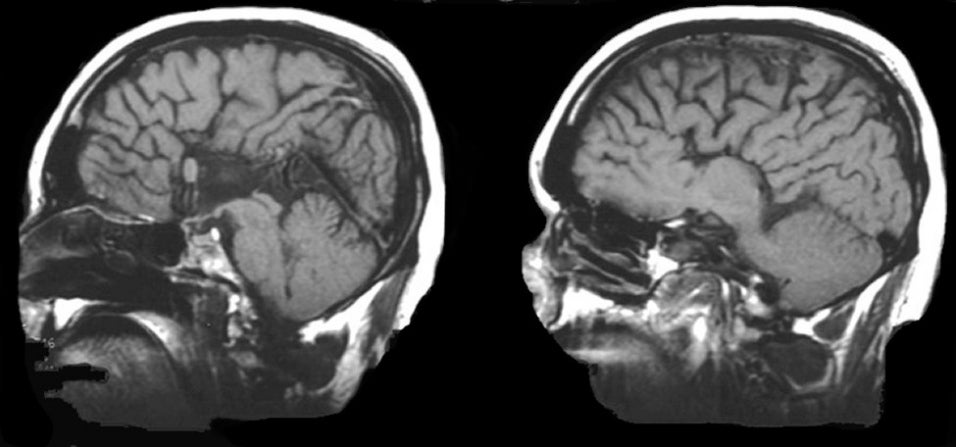
|
A 3 year-old boy was evaluated for delay in reaching verbal milestones. Otherwise, his examination was normal. |

![]()
| Agenesis of the Corpus Callosum: T1-weighted sagittal and
parasagittal MRIs. Note the complete absence of the corpus callosum,
which is normally a prominent structure on sagittal MRI scans. Agenesis of the corpus callosum may be clinically silent. However, detailed neuropsychological testing may show deficits in interhemispheric transfer of information. Some children may have learning disabilities and mental retardation. The diagnosis is made by neuroimaging. The earliest callosal axons appear at approximately day 74 of embryogenesis and assume an adult configuration by day 115. Agenesis of the corpus callosum may occur as an isolated finding, or in association with other genetic disorders. One such disorder is Aicardi syndrome, which consists of callosal agenesis, chorioretinal lacunae, epilepsy, mental retardation and spinal anomalies. This x-linked disorder is seen only in females, as it is lethal to males in utero. Callosal agenesis may be incomplete, often associated with other neuronal migration defects (e.g., schizencephaly, holoprosencephaly, arhinencephaly, septo-optic dysplasia, colpocephaly, and lissencephaly). Partial dysgenesis is also seen in Chiari type II malformation. |
Revised
11/29/06
Copyrighted 2006. David C Preston